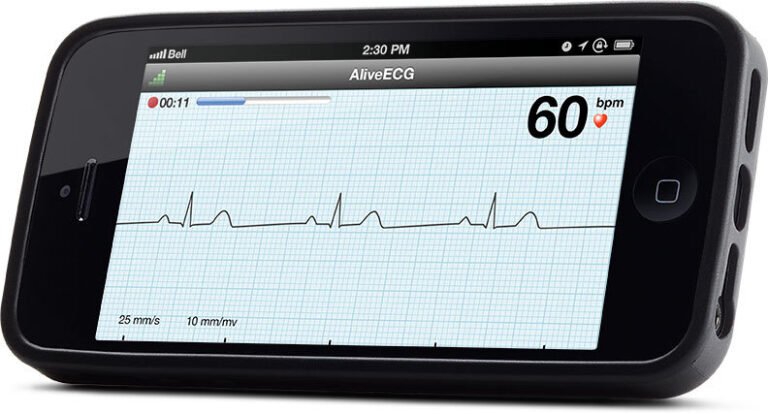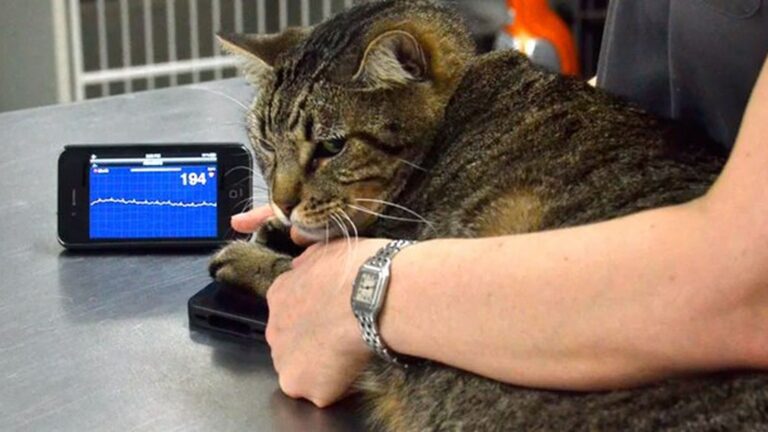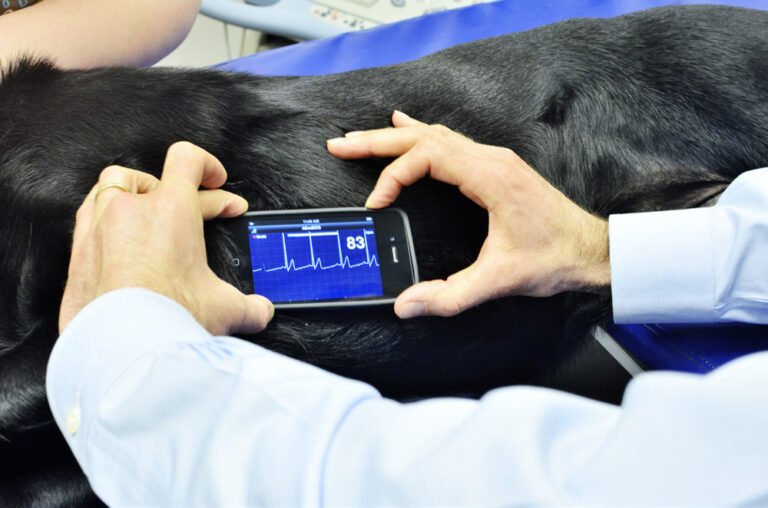AliveCor is a company that produces an electrocardiograph (ECG) smartphone app and device for dogs and cats called the AliveCor Veterinary Heart Monitor. Dr. Nancy Kay, DVM reported in Spot Speaks about a study of the smartphone technology conducted by researchers at the Cornell College of Veterinary Medicine. The story was titled “A Smart Phone Device Records Canine and Feline ECG’s (Electrocardiographs).”
An ECG tracks the heart’s electrical conduction through electrodes (electrical conductors) attached to the animal be it canine, feline or human being. The electrical activity keeps the heart beating and dictates the rhythm of the beats. The disruption of the normal electrical conduction pattern can result in an abnormal rhythm commonly referred to as arrhythmia or cardiac arrhythmia. Atrial fibrillation or a-fib, is an example of a cardiac arrhythmia.
The primary purpose of an ECG is evaluation of the heart rhythm even though it can also be used to measure heart rate. Just as with people, an ECG is a standard test when evaluating dogs and cats for heart disease. Moreover, it is not uncommon to conduct an ECG when maladies are present that can act as secondary disruptions of the normal heart rhythm including but not limited to infection, trauma, heatstroke and cancer.
In 2012 the FDA approved the use of this technology with people. A smartphone with ECG technology is placed inside a handheld case that is attached to electrodes. The device can also be connected through Bluetooth which permits recording of ECG data. Accordingly, this technology provides efficient and timely generation, assimilation and dissemination of ECG information that can be stored, printed and shared electronically.
During this study three board certified cardiologists compared 30-second ECG readings conducted on 78 animals (51 dogs and 27 cats) recorded simultaneously using a standard ECG instrument and the smartphone device. The study revealed results with a strong correlative comparison between the two methodologies employed. The heart rate values or number of beats per minute between the two instruments were within one beat of each other. Additionally, the agreement among cardiologists relative to the heart rhythm assessments were comparable except for two of the dogs and four of the cats. These differences fall well within the normal range of disagreement among cardiologists when comparing ECG’s generated using standard equipment.
Dr. Kay’s conclusions based on the study results (she has not personally used the smartphone device) are that the new technology is practical and efficient. She points out that standard ECG machines provide significantly more information than just heart rate and rhythm, which is very important in assessing primary heart disease in cats and dogs. She did conclude that the smartphone device would prove most useful as a rapid screening device for cardiac arrhythmias (especially in places like emergency hospitals), as a screening tool for house call veterinarians, as a way for owners of cardiac arrhythmia pets to monitor their furry children at home and as a cost effective alternative to a standard ECG machine ($300 smartphone device vs. $1000+ standard ECG machine). The smartphone device even works on horses.





